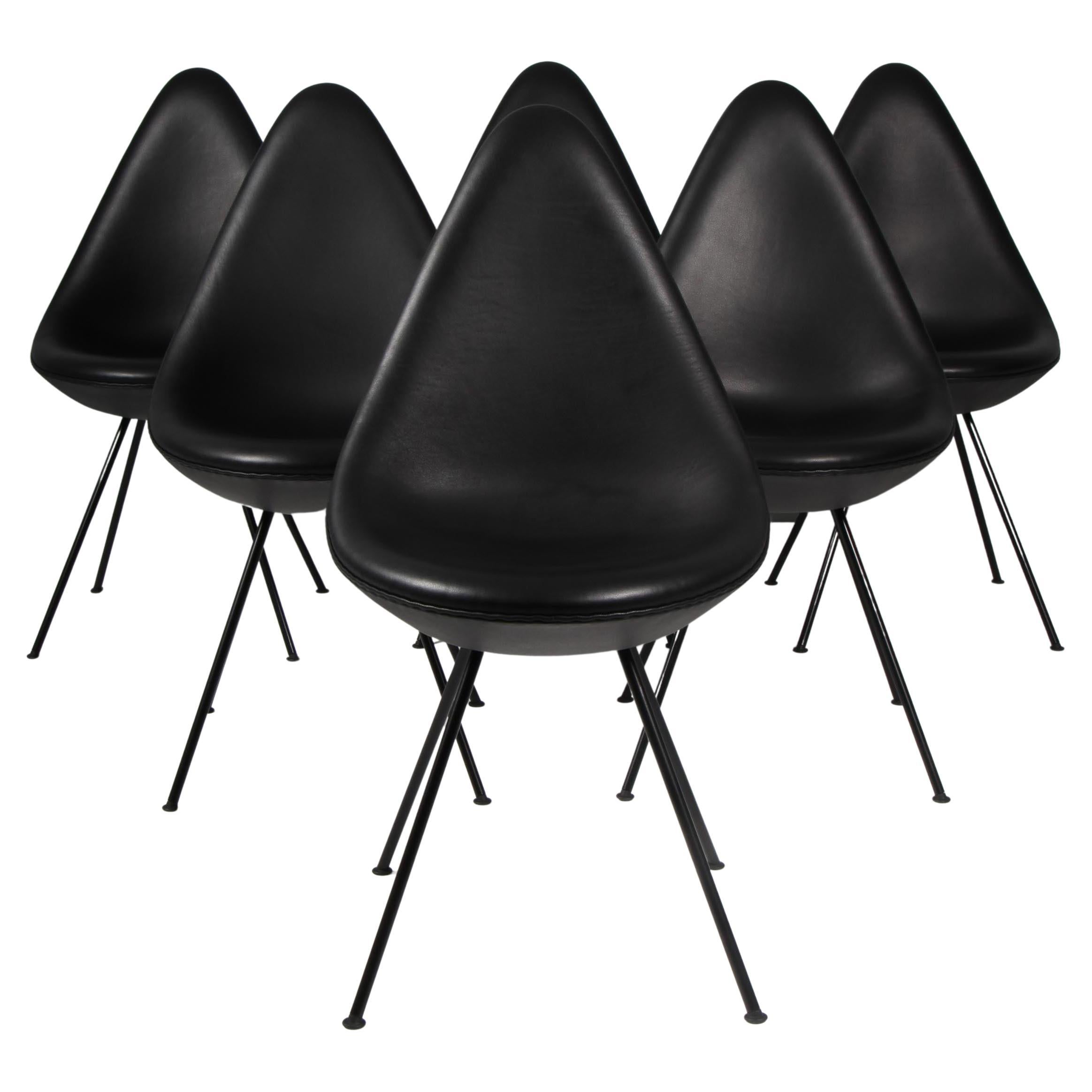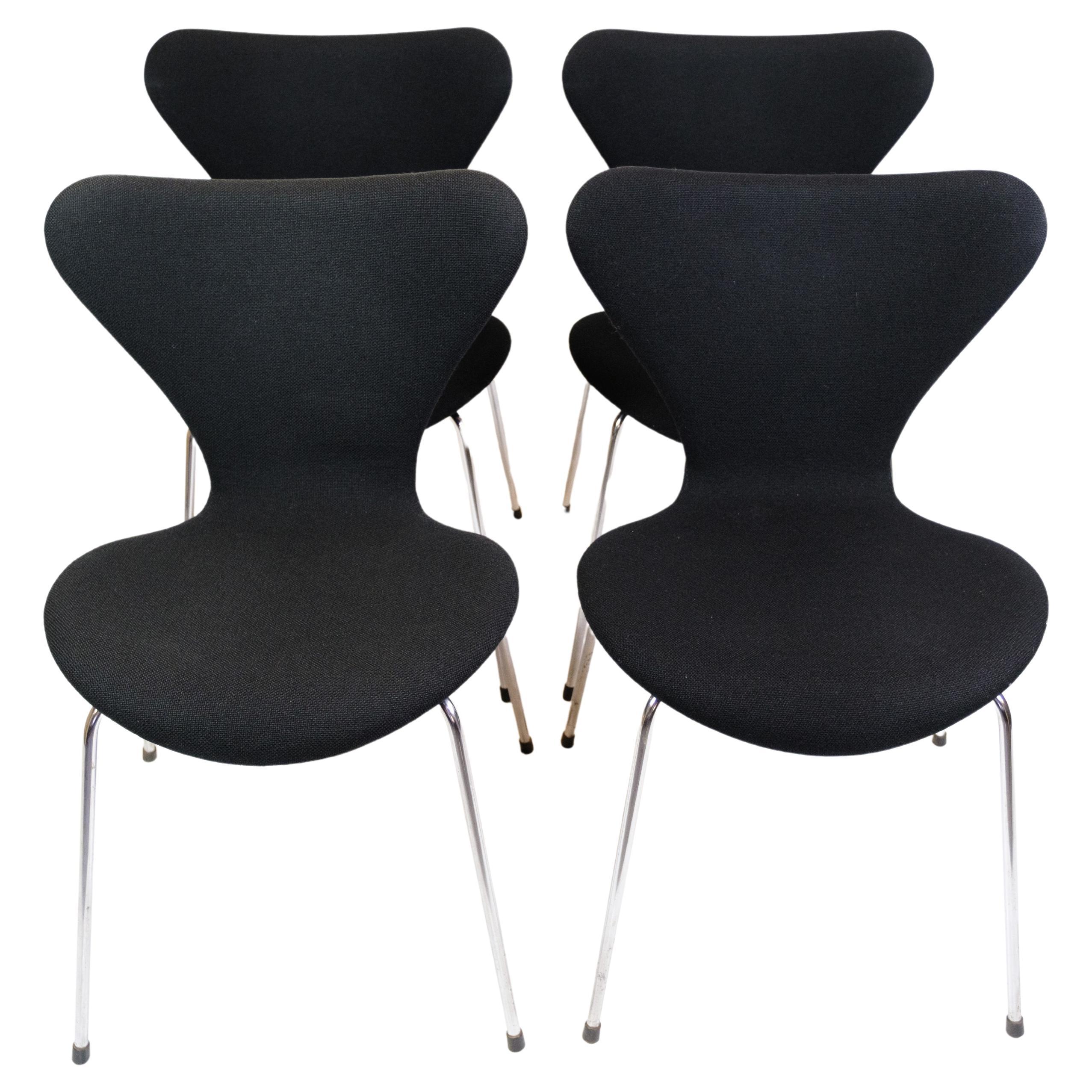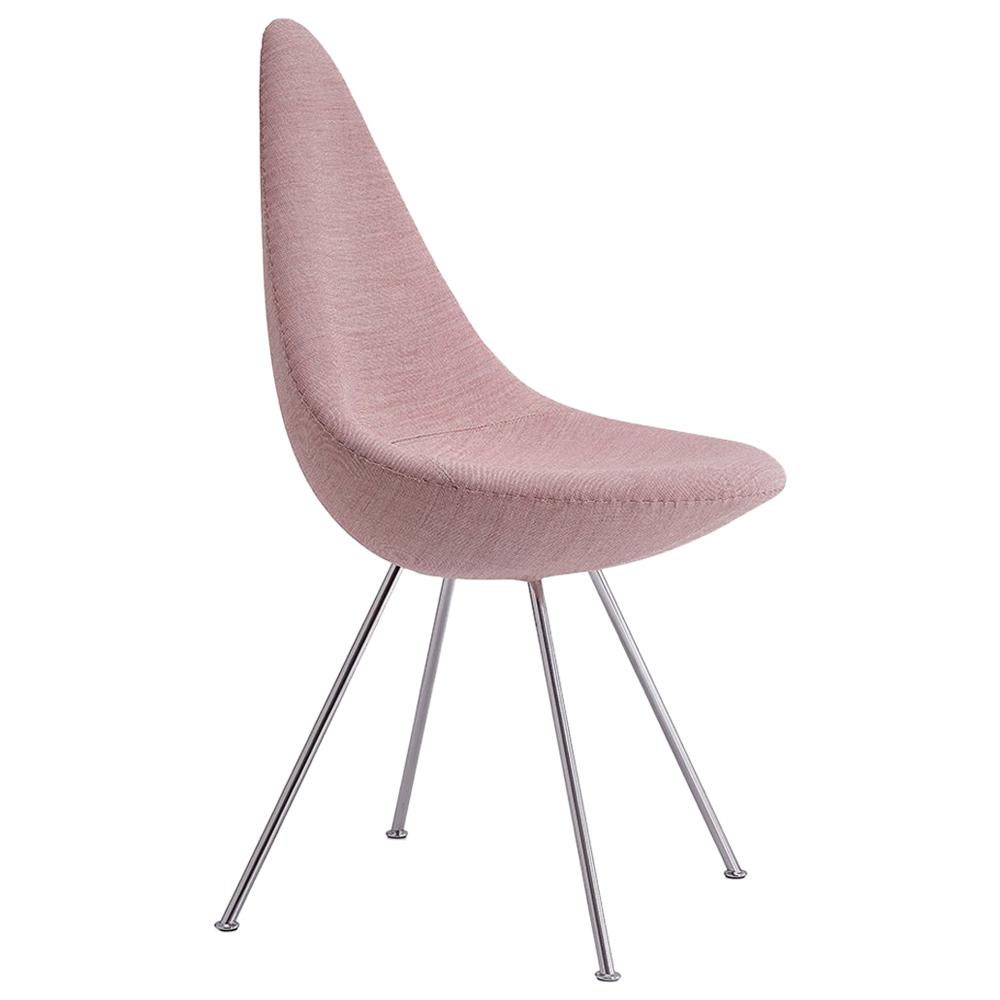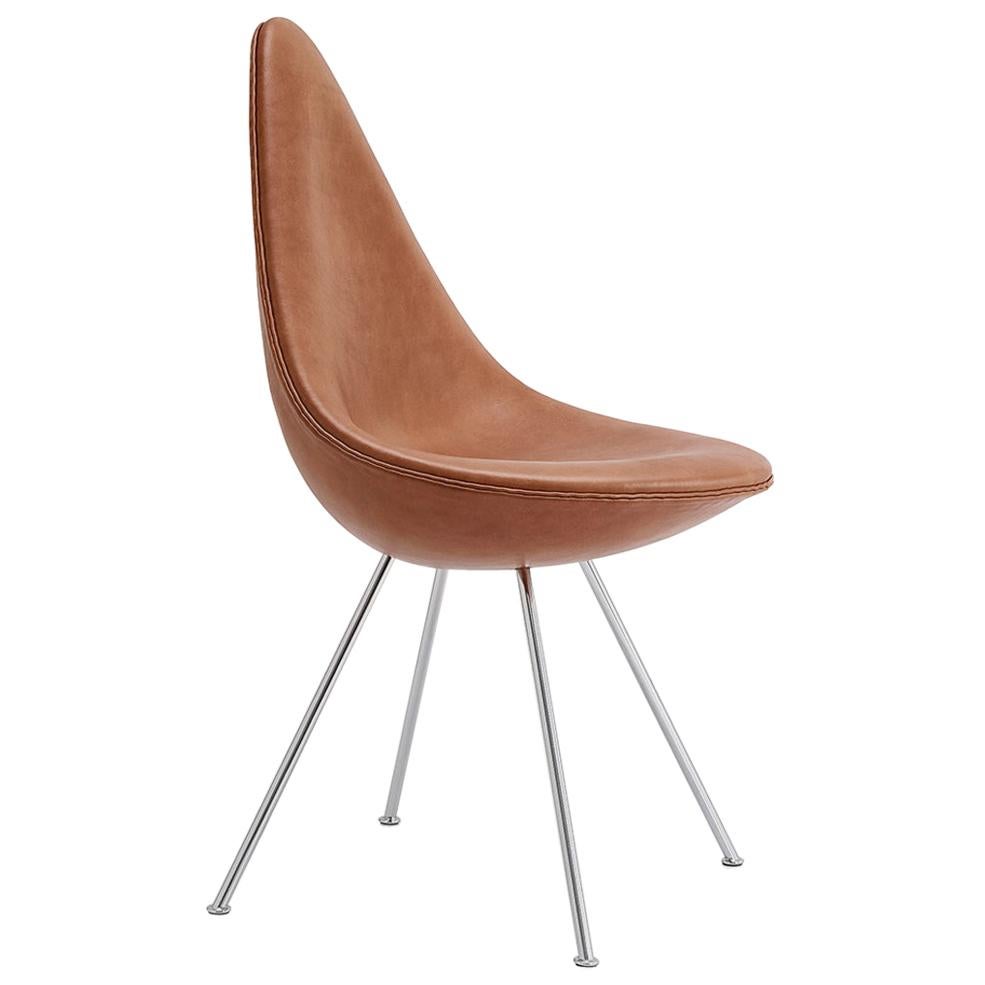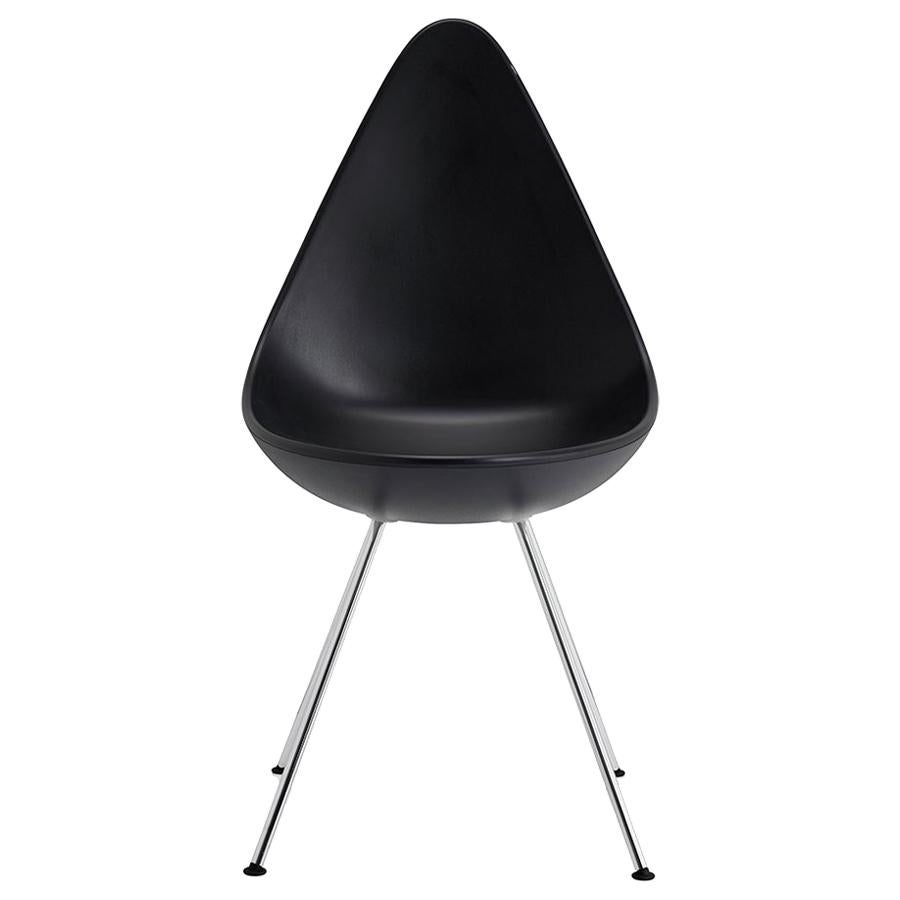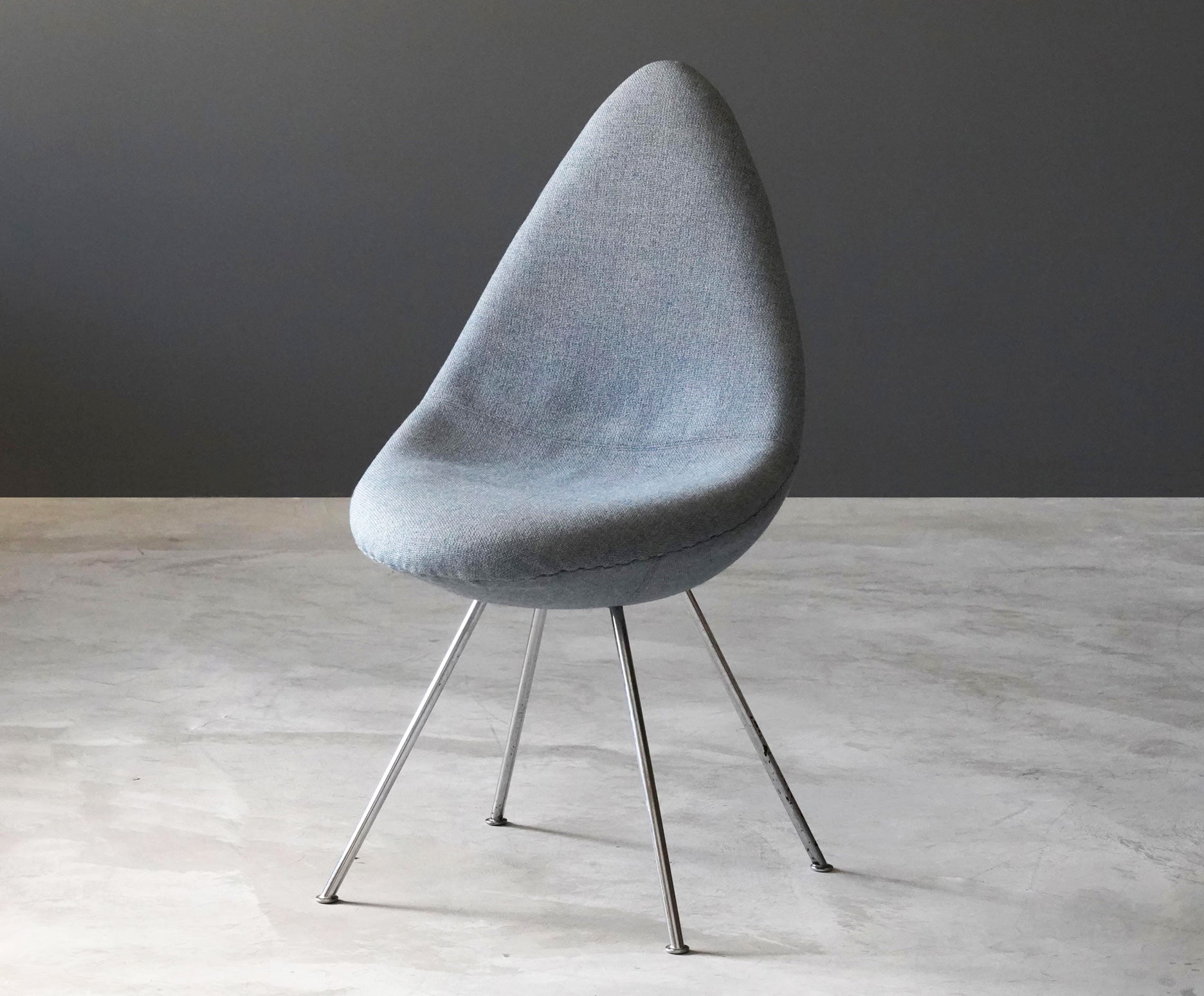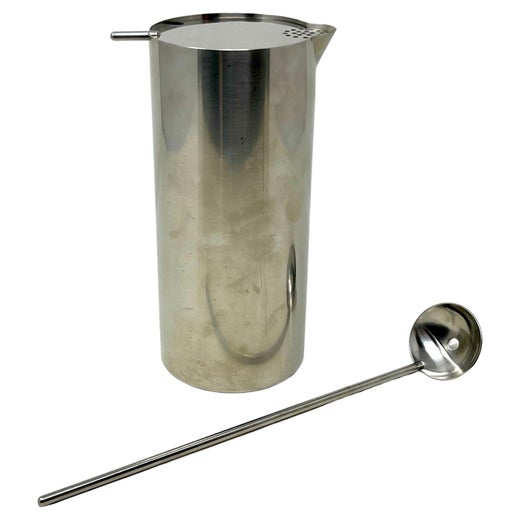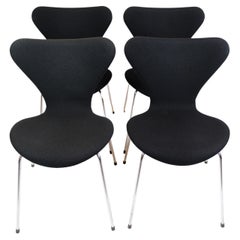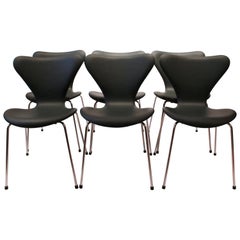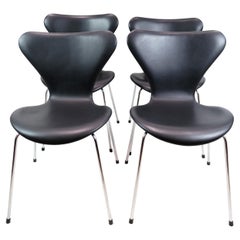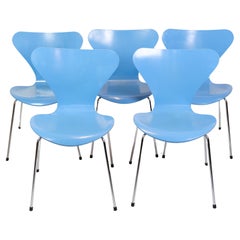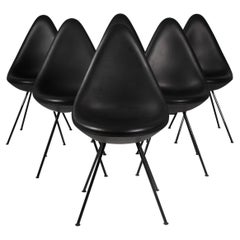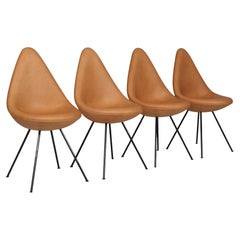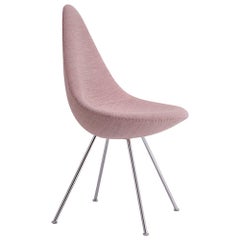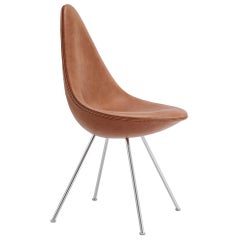Set Of Four Dining Chairs The Drop Model 3110 Made In Black By Arne Jacobsen
About the Item
- Creator:Fritz Hansen (Manufacturer),Arne Jacobsen (Designer)
- Design:
- Dimensions:Height: 34.65 in (88 cm)Width: 17.72 in (45 cm)Depth: 15.75 in (40 cm)Seat Height: 18.12 in (46 cm)
- Sold As:Set of 4
- Style:Modern (Of the Period)
- Materials and Techniques:
- Place of Origin:
- Period:
- Date of Manufacture:2016
- Condition:Wear consistent with age and use.
- Seller Location:Lejre, DK
- Reference Number:1stDibs: LU1209242786682
Drop Chair
Together with the popular Swan chair and Egg chair, Arne Jacobsen (1902–71) designed the Drop chair in 1958 for his undisputed masterpiece — the complete design of the SAS Royal Hotel in Copenhagen (now called the Radisson Blu Royal Hotel). Born in Copenhagen in 1902, Jacobsen apprenticed as a bricklayer and studied architecture at the Royal Danish Academy of Fine Arts. His travels introduced him to the work of modernist titans like Walter Gropius, Ludwig Mies van der Rohe and Le Corbusier. Jacobsen absorbed those influences and brought them back to Denmark, where he worked on a number of architectural commissions and began creating site-specific furniture and furnishings to outfit his spaces.
For Jacobsen’s SAS Royal Hotel project, the Drop chair, with its molded polyurethane foam inner shell and steel tube legs, was not only the smallest of the bunch but also the least well known. There was a limited run of the piece produced exclusively for the hotel, which opened in 1960. As the name suggests, the form was inspired by the shape of a drop, but it also fulfilled a functional need. Leather-upholstered Drop chairs were used throughout the restaurant and behind a snack bar, where space was tight. The chair’s tapered backrest was designed to be as space-efficient as possible. A more delicate fabric-upholstered version of the seat was placed at the dressing table inside each guest room. (The hotel has since undergone a complete redesign, but one suite has been preserved with Jacobsen’s original designs, including all the chairs.)
Jacobsen conceived his design for the hotel as a Gesamtkunstwerk, a German term meaning that all of the components within a work of art contribute to creating a cohesive whole. As part of that approach, the drop motif recurred throughout the space in ornamental flourishes and in the form of cutlery, tableware and wineglasses — all of which were designed by Jacobsen.
Part of the reason Jacobsen wasn’t able to put all three chairs into production with Fritz Hansen was because the molded-foam technology used to construct the seat was still very new. It wasn’t until 2014 that the manufacturer joined forces with Jacobsen’s grandson, designer Tobias Jacobsen, to relaunch the Drop chair. Along with the original upholstered version, the manufacturer also introduced an injection-molded plastic edition featuring a powder-coated or chromed steel base. The plastic variant of the Drop chair renders the design more accessible, but with its precise edges, it also refines Jacobsen’s sculptural form even further.
Arne Jacobsen
The eye-catching work of the Danish architect and designer Arne Jacobsen often introduces new collectors to mid-20th century furniture. With their fluid lines and sculptural presence, Jacobsen’s signature pieces — the elegant Swan chair and the cozy-yet-cutting edge Egg chair, both first presented in 1958 — are iconic representations of both the striking aesthetic of the designers of the era and their concomitant attention to practicality and comfort. Jacobsen designed furniture that had both gravitas and groove.
Though Jacobsen is a paragon of Danish modernism, his approach to design was the least “Danish” of those who are counted as his peers. The designs of Hans Wegner, Finn Juhl, Børge Mogensen and others grew out of their studies as cabinetmakers. They prized skilled craftsmanship and their primary material was carved, turned and joined wood. Jacobsen was first and foremost an architect, and while he shared his colleagues’ devotion to quality of construction, he was far more open to other materials such as metal and fiberglass.
Many of Jacobsen’s best-known pieces had their origin in architectural commissions. His molded-plywood, three-legged Ant chair (1952) was first designed for the cafeteria of a pharmaceutical company headquarters. The tall-backed Oxford chair was made for the use of dons at St. Catherine’s College, Oxford, whose Jacobsen-designed campus opened in 1962 (while still under construction). The Swan, Egg and Drop chairs and the AJ desk lamp were all created as part of Jacobsen’s plan for the SAS Royal Copenhagen Hotel, which opened in 1960. (The hotel has since been redecorated, but one guest room has been preserved with all-Jacobsen accoutrements.)
To Jacobsen’s mind, the chief merit of any design was practicality. He designed the first stainless-steel cutlery set made by the Danish silver company Georg Jensen; Jacobsen’s best-selling chair — the plywood Series 7 — was created to provide lightweight, stackable seating for modern eat-in kitchens. But as you will see from the objects on 1stDibs, style never took a backseat to function in Arne Jacobsen’s work. His work merits a place in any modern design collection.
Find authentic Arne Jacobsen chairs, tables, sofas and other furniture on 1stDibs.
- ShippingRetrieving quote...Shipping from: Lejre, Denmark
- Return Policy
More From This Seller
View AllEarly 2000s Danish Scandinavian Modern Dining Room Chairs
Fabric
Vintage 1960s Danish Mid-Century Modern Dining Room Chairs
Leather
Vintage 1980s Danish Mid-Century Modern Dining Room Chairs
Leather
Vintage 1980s Danish Mid-Century Modern Dining Room Chairs
Wood
Vintage 1950s Danish Mid-Century Modern Dining Room Chairs
Rosewood
Vintage 1960s Danish Mid-Century Modern Dining Room Chairs
Metal
You May Also Like
Vintage 1960s Danish Scandinavian Modern Dining Room Chairs
Steel
Vintage 1960s Danish Scandinavian Modern Dining Room Chairs
Steel
21st Century and Contemporary American Mid-Century Modern Chairs
Oak
21st Century and Contemporary American Mid-Century Modern Chairs
Oak
21st Century and Contemporary American Mid-Century Modern Chairs
Chrome
21st Century and Contemporary American Mid-Century Modern Chairs
Oak
